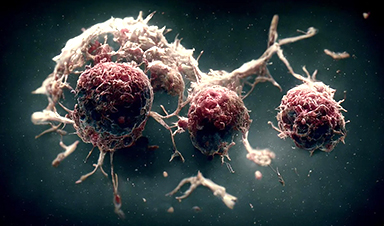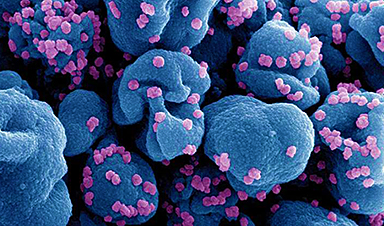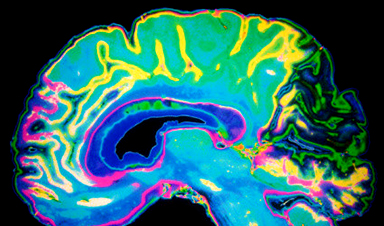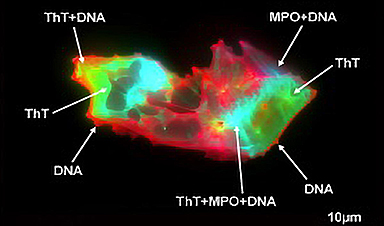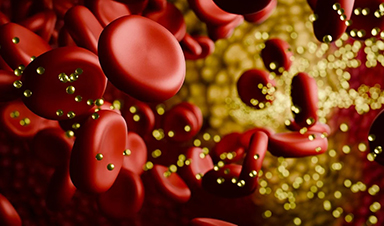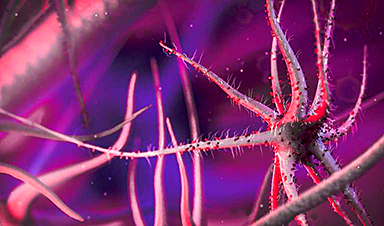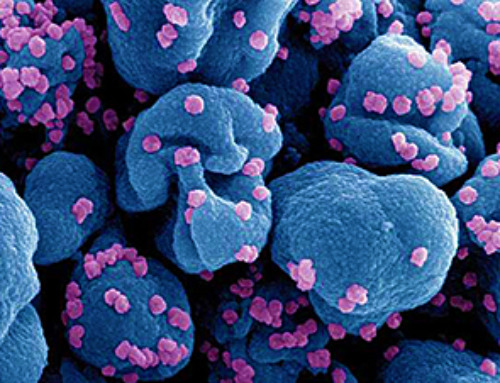A study led by Pohang University of Science and Technology (POSTECH) and the Institute for Bioengineering of Catalonia (IBEC) in South Korea details the creation of urea-powered nanomotors that enhance immunotherapy for bladder cancer. The nanomotors open up new possibilities in oncology by more effectively activating the immune system and surpassing the effectiveness of currently used treatments. The study was published in the journal Nature Communications.
Immunotherapy using BCG (Bacillus Calmette-Guérin), a weakened bacterium injected into the bladder to trigger an immune response against tumor cells, is currently the standard treatment for non-invasive bladder cancer. Significant drawbacks of this treatment include the requirement for repeated doses, serious adverse effects, and decreased effectiveness in some patients. The novel nanomotor-based treatment provides a more potent substitute, which considerably slows the growth of tumors in preclinical mouse models and more effectively activates the immune system.
Urease is an enzyme these self-propelled nanoparticles use to react with urine urea. Their mobility allows them to be dispersed more effectively throughout the bladder, precisely reaching tumor cells and extending the duration of the medication’s presence in the impacted tissue.
The nanomotors’ surface contains a STING agonist, a crucial molecule in immune system activation.
We have shown that our approach is more effective than conventional BCG treatment in mice, which is a breakthrough in immunotherapy for this type of cancer.
Samuel Sánchez, Study Co-Leader and ICREA Research Professor, Institute for Bioengineering of Catalonia (IBEC)
The researchers paired the nanomotors with a PD-1 inhibitor, a medication that prevents tumor cells from using an escape mechanism, to further strengthen the immune response.
“The combination of our nanomotors with the anti-PD-1 treatment showed a remarkable synergy that could lead to more effective combination therapies with fewer side effects,” added Sánchez.
The study marks a significant advancement in the hunt for novel treatment approaches for bladder cancer, a condition that necessitates intensive and protracted care due to its high recurrence rate.
This study’s participants included PHI BIOMED Co., the Korea Advanced Institute of Science and Technology (KAIST), CIC biomaGUNE of the Basque Country, Seoul National University, and Seoul National University Hospital.
Journal Reference:
Choi, H., et al. (2025) Urease-powered nanomotor containing STING agonist for bladder cancer immunotherapy. Nature Communications. doi.org/10.1038/s41467-024-54293-z
News
Scientists Melt Cancer’s Hidden “Power Hubs” and Stop Tumor Growth
Researchers discovered that in a rare kidney cancer, RNA builds droplet-like hubs that act as growth control centers inside tumor cells. By engineering a molecular switch to dissolve these hubs, they were able to halt cancer [...]
Platelet-inspired nanoparticles could improve treatment of inflammatory diseases
Scientists have developed platelet-inspired nanoparticles that deliver anti-inflammatory drugs directly to brain-computer interface implants, doubling their effectiveness. Scientists have found a way to improve the performance of brain-computer interface (BCI) electrodes by delivering anti-inflammatory drugs directly [...]
After 150 years, a new chapter in cancer therapy is finally beginning
For decades, researchers have been looking for ways to destroy cancer cells in a targeted manner without further weakening the body. But for many patients whose immune system is severely impaired by chemotherapy or radiation, [...]
Older chemical libraries show promise for fighting resistant strains of COVID-19 virus
SARS‑CoV‑2, the virus that causes COVID-19, continues to mutate, with some newer strains becoming less responsive to current antiviral treatments like Paxlovid. Now, University of California San Diego scientists and an international team of [...]
Lower doses of immunotherapy for skin cancer give better results, study suggests
According to a new study, lower doses of approved immunotherapy for malignant melanoma can give better results against tumors, while reducing side effects. This is reported by researchers at Karolinska Institutet in the Journal of the National [...]
Researchers highlight five pathways through which microplastics can harm the brain
Microplastics could be fueling neurodegenerative diseases like Alzheimer's and Parkinson's, with a new study highlighting five ways microplastics can trigger inflammation and damage in the brain. More than 57 million people live with dementia, [...]
Tiny Metal Nanodots Obliterate Cancer Cells While Largely Sparing Healthy Tissue
Scientists have developed tiny metal-oxide particles that push cancer cells past their stress limits while sparing healthy tissue. An international team led by RMIT University has developed tiny particles called nanodots, crafted from a metallic compound, [...]
Gold Nanoclusters Could Supercharge Quantum Computers
Researchers found that gold “super atoms” can behave like the atoms in top-tier quantum systems—only far easier to scale. These tiny clusters can be customized at the molecular level, offering a powerful, tunable foundation [...]
A single shot of HPV vaccine may be enough to fight cervical cancer, study finds
WASHINGTON -- A single HPV vaccination appears just as effective as two doses at preventing the viral infection that causes cervical cancer, researchers reported Wednesday. HPV, or human papillomavirus, is very common and spread [...]
New technique overcomes technological barrier in 3D brain imaging
Scientists at the Swiss Light Source SLS have succeeded in mapping a piece of brain tissue in 3D at unprecedented resolution using X-rays, non-destructively. The breakthrough overcomes a long-standing technological barrier that had limited [...]
Scientists Uncover Hidden Blood Pattern in Long COVID
Researchers found persistent microclot and NET structures in Long COVID blood that may explain long-lasting symptoms. Researchers examining Long COVID have identified a structural connection between circulating microclots and neutrophil extracellular traps (NETs). The [...]
This Cellular Trick Helps Cancer Spread, but Could Also Stop It
Groups of normal cbiells can sense far into their surroundings, helping explain cancer cell migration. Understanding this ability could lead to new ways to limit tumor spread. The tale of the princess and the [...]
New mRNA therapy targets drug-resistant pneumonia
Bacteria that multiply on surfaces are a major headache in health care when they gain a foothold on, for example, implants or in catheters. Researchers at Chalmers University of Technology in Sweden have found [...]
Current Heart Health Guidelines Are Failing To Catch a Deadly Genetic Killer
New research reveals that standard screening misses most people with a common inherited cholesterol disorder. A Mayo Clinic study reports that current genetic screening guidelines overlook most people who have familial hypercholesterolemia, an inherited disorder that [...]
Scientists Identify the Evolutionary “Purpose” of Consciousness
Summary: Researchers at Ruhr University Bochum explore why consciousness evolved and why different species developed it in distinct ways. By comparing humans with birds, they show that complex awareness may arise through different neural architectures yet [...]
Novel mRNA therapy curbs antibiotic-resistant infections in preclinical lung models
Researchers at the Icahn School of Medicine at Mount Sinai and collaborators have reported early success with a novel mRNA-based therapy designed to combat antibiotic-resistant bacteria. The findings, published in Nature Biotechnology, show that in [...]

